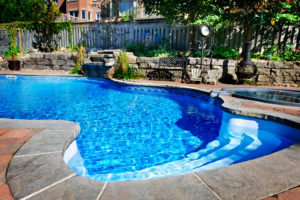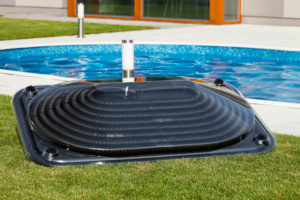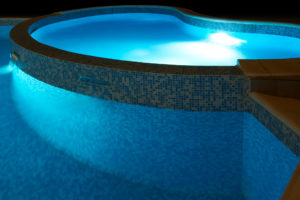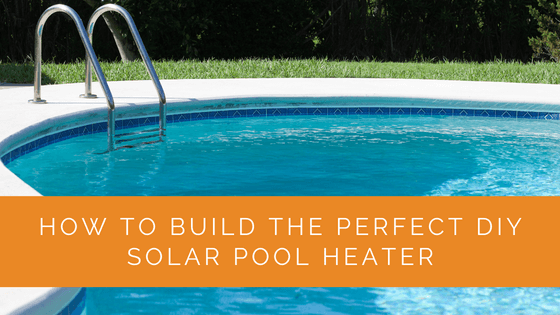Embracing renewable energy is not just an environmental statement but a smart, cost-effective choice, especially when it comes to heating your pool. Building a DIY solar pool heater is an achievable project that can dramatically cut your energy bills and reduce your carbon footprint. This article guides you through the essential tools and steps needed to construct your own solar pool heater, from selecting the right materials to the final assembly. Whether you’re a seasoned DIYer or a beginner, these detailed instructions are designed to make the process straightforward and rewarding. You’ll learn how to harness the power of the sun to efficiently and sustainably heat your pool, making it the perfect addition to your eco-friendly home.
Contents
- 1 Tools that Are a Must-Have if You Want to Build a DIY Solar Heater
- 2 Steps to Be Used if You Want to Build a DIY Solar Heater
- 3 Advantages of Using a DIY Solar Heater
- 4 How Much Heat Can a DIY Solar Heater Generate?
- 5 Case Study: Building a DIY Solar Pool Heater with Solar Panels Network USA
- 6 Expert Insights From Our Solar Panel Installers About Building the Perfect DIY Solar Pool Heater
- 7 Wrapping Up
Tools that Are a Must-Have if You Want to Build a DIY Solar Heater
Here is a list of the top tools that are a must-have in case you plan on building your DIY portable heater:
- Drills and drill bits
- Right angle clamps
- Screwdriver set
- Saw
- Copper tubing cutter
- Forstner drill bits
- Paintbrushes
- Burner and soldering equipment
- Silicon gun
- Copper pipe bending tool
- Scissors
- Other standard tools
- Safety equipment (transparent glass cover, silicone, check valve, aluminum foil, treated wooden planks, etc.)

Steps to Be Used if You Want to Build a DIY Solar Heater
Building your own DIY solar panel heater is easy, provided you understand the basics. Here are some steps you can use to build your own solar heater:
- Step 1: The primary step in building your own DIY solar heater is designing and building the wooden plank. This wooden frame is to hold the solar tank in place. Keep in mind that you need to keep one side of the box inclined. This is done so that the glazing of the solar panel can receive maximum sunlight exposure.
- Step 2: The next step to building your own DIY pool heater is the construction of walls for the heater box. This is done with the help of plywood paired with aluminum, styrofoam, or fiberglass insulation on the inside.
- Step 3: The next step entails figuring out the plumbing arrangement. This must be done before you build and install the heater box. Survey the entire area where you plan to install the DIY solar pool heater.
Then, figure out where the incoming and exit water pipes will be located, so that you can plan and place the solar panel heater accordingly. Remember that this system will connect with your house’s plumbing and heating system.
- Step 4: Now, we move on to the insulation. Remember that you need to insulate all these pipes from the inside. This way, you can keep energy and heat loss to a minimum.
- Step 5: The next logical step is figuring out what to do with the glazing. This is where the box needs to get covered. There are quite a few options for materials you can use for glazing, including tempered glass, acrylic, fiberglass, etc.
The idea behind putting up the glazing is to increase the amount of heat passing through the cover and reduce overall heat loss. The most popular glazing material used everywhere is generally tempered glass.
- Step 6: The last step involves ruling out all inefficiencies in your current build. For instance, if you have been using an old electric heater for a while, you need to check for a couple of things during installation.
Firstly, get rid of the outer enclosure and existing insulation. Additionally, check the insides of the pipes for sediments as well. Moreover, make sure you clean the water tank and paint it black as well. Also, install a drain, pressure release valve, and pipe fittings. Lastly, ensure all exposed surfaces, joints, and connections must be silicone.
Get these six steps right, and you have a DIY solar heater on your hands. This DIY solar panel heater has a wide range of applications, including space heaters, pool heaters, patio heaters, radiant heaters, ceramic heaters, etc.

Advantages of Using a DIY Solar Heater
Here are a few notable advantages of using a solar panel-powered heater:
No-cost electricity generation
The most significant advantage of using a solar heater is that there is no electricity generation cost.
Your only investment in this entire affair would be the money you have spent buying all the raw materials and the energy you have spent building it. Apart from that and a few other rare maintenance charges, you don’t really need to cough up more money to use your solar heat-powered heater.
Furthermore, if you already stay in a hot place (e.g., Arizona), you can reduce your water heating bill by as much as 90%.
High Efficiency
Heaters that work on solar heat cut down the number of steps required to heat the water. The solar heat that falls onto the panels is directly converted into energy, which heats up your water.
Moreover, solar panels are a lot more efficient than regular heaters.
This can be backed by the fact that your solar panels will absorb 80% of the solar heat without using external fuels.
Low Maintenance Costs
Setting up your own DIY solar heater comes attached with either zero or minimal cost. However, keep in mind that you need to keep cleaning the heater from time to time. Furthermore, since the entire setup includes no moving parts, you don’t have to worry about breaking anything while cleaning. Also, no need for extensive repairing attention either.
Your DIY solar pool heater might last around 10-20 years if maintained well.
Reduced Carbon Footprint
With increasing alarms of climate change, the reduction of carbon footprint is quite essential. Since the solar heater uses a renewable energy source for heat generation, there is no carbon footprint left behind by the heater.
As a result, you will also lower your gas and electric bills, ultimately contributing to the environment.

How Much Heat Can a DIY Solar Heater Generate?
The amount of heat generated by your DIY solar heater depends on a wide variety of factors. They include:
Latitude
Latitude is another factor that contributes to your solar heater’s performance. As you move north, sun exposure reduces. The functionality of your solar heater will be useless, since it won’t be able to heat water unless it receives ample amounts of solar heat.
So before building a DIY water heater, you first need to figure out whether it’s worth it or not, based on your location and latitude.
Heat Panel Conductivity
Heat panel conductivity is a very vital factor when it comes to the heating capacity of your heater. If your DIY solar heater isn’t made out of excellent heat conductors, you might lose a lot of energy.
For instance, a black PVC pipe will conduct much less heat than a black metal pipe. Furthermore, keep in mind that various metals also have different conductivities.
An example of this would be copper, which is one of the best heat-conducting metals. However, this metal is quite expensive and might not bend to the required diameter.
Also, keep in mind that the downspout panel option for your heater must use metal instead of plastic.
Solar Absorption
The rate and amount of solar heat absorbed by your solar heater essentially depends upon how reflective your panel surface is. So, remember that you need to paint the panel with matt black paint rather than glossy.
The glazing will reflect 10% of the light, leaving the other 90% up for absorption. However, in windy areas with little sunlight, all you can be sure that the panel will absorb 80% of the available solar heat.
Solar Panel Size
The size of your solar panel is one of the primary factors in deciding the heat your solar heater generates in a specific amount of time. If the surface area is larger, naturally, a larger volume of water will be heated.
However, choose the size of your solar panel based on your needs and available area. Consider both these factors closely and fit a panel of the ideal size for your heater.
Case Study: Building a DIY Solar Pool Heater with Solar Panels Network USA
Background
At Solar Panels Network USA, we pride ourselves on promoting renewable energy solutions that are both practical and efficient. One of our most rewarding projects involved assisting a homeowner in constructing a DIY solar pool heater. This project not only helped the client save on energy costs but also provided an eco-friendly heating solution for their pool.
Project Overview
The homeowner, based in a sunny region, wanted to reduce their dependency on electric pool heaters and lower their energy bills. They approached us for guidance on building a DIY solar pool heater. The client had a moderate-sized pool and a basic understanding of DIY projects but lacked specific knowledge about solar heating systems.
Implementation
Initial Consultation and Planning
We began with a detailed consultation to understand the client’s needs and assess the available space for the solar panels. Based on this, we recommended the tools and materials required for the project, including:
- Solar panels
- Copper tubing
- Plywood
- Insulation materials
- Tempered glass for glazing
- Basic tools like drills, saws, and screwdrivers
Step-by-Step Guidance
- Constructing the Frame: We guided the client in building a wooden frame to house the solar panels, ensuring one side was inclined to maximize sunlight exposure.
- Insulating the Box: Next, we helped the client install plywood walls and insulate the box with fiberglass. This step was crucial to minimize heat loss.
- Setting Up the Plumbing: We assisted in planning the plumbing layout, ensuring proper placement of incoming and outgoing water pipes. The client was instructed on connecting the system to their existing pool plumbing.
- Installing the Glazing: We recommended tempered glass for the glazing, which the client installed to enhance heat absorption and reduce heat loss.
- Final Adjustments and Testing: Finally, we helped the client check for inefficiencies, clean the water tank, and ensure all joints were sealed with silicone. The system was then tested for functionality and efficiency.
Results
The DIY solar pool heater exceeded expectations. The client reported a significant reduction in their energy bills, thanks to the efficient heating provided by the solar system. The pool’s temperature was consistently maintained at a comfortable level, allowing for extended use throughout the year. Moreover, the client appreciated the hands-on experience and the satisfaction of building their own renewable energy solution.
Summary
This project highlighted the practical benefits of DIY solar installations. By providing detailed guidance and support, Solar Panels Network USA helped a homeowner achieve substantial energy savings and contribute to environmental conservation. This case study underscores the potential of DIY solar projects to deliver efficient, cost-effective, and sustainable solutions for everyday needs.
Expert Insights From Our Solar Panel Installers About Building the Perfect DIY Solar Pool Heater
Building your own solar pool heater is a fantastic way to cut energy costs and reduce your carbon footprint. With the right tools and materials, you can harness the sun’s energy efficiently and sustainably.
Senior Solar Installer
One of the main advantages of a DIY solar pool heater is the flexibility it offers. You can customize the system to fit your specific needs and location, ensuring maximum efficiency and performance.
Lead Solar Technician
Safety and proper planning are crucial when building a DIY solar pool heater. Ensuring good insulation and using high-quality materials can significantly impact the system’s longevity and efficiency.
Solar Energy Specialist
Wrapping Up
If you are tired of seeing fat bills due to high electricity consumption by your electric heater, it is time to make the switch to solar heat. Moreover, it would be even better if you managed to build the heater by yourself. Your initial installation cost further decreases, and you don’t have to be conscious of the time you use your heater.
As a result, setting up your own DIY water heater will not only bring down your electricity bills but also reduces your carbon footprint and slashes maintenance cost.
So what are you waiting for? If you haven’t yet set up your own solar heater, break out your construction tools and get it done now.
About the Author
Solar Panels Network USA stands at the forefront of solar energy solutions, driven by a team of seasoned solar engineers and energy consultants. With over decades of experience in delivering high-quality solar installations and maintenance, we are committed to promoting sustainable energy through customer-centric, tailored solutions. Our articles reflect this commitment, crafted collaboratively by experts to provide accurate, up-to-date insights into solar technology, ensuring our readers are well-informed and empowered in their solar energy decisions.

